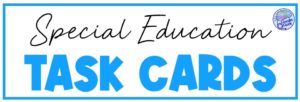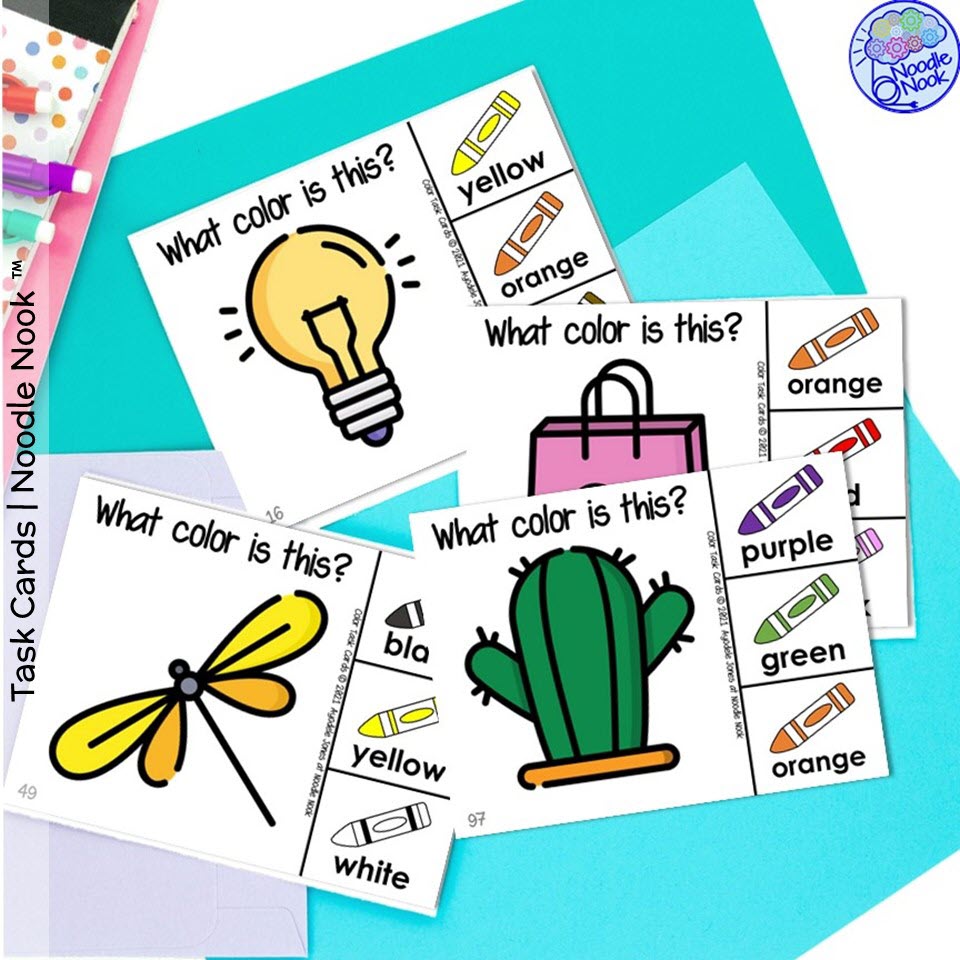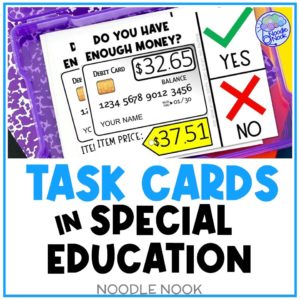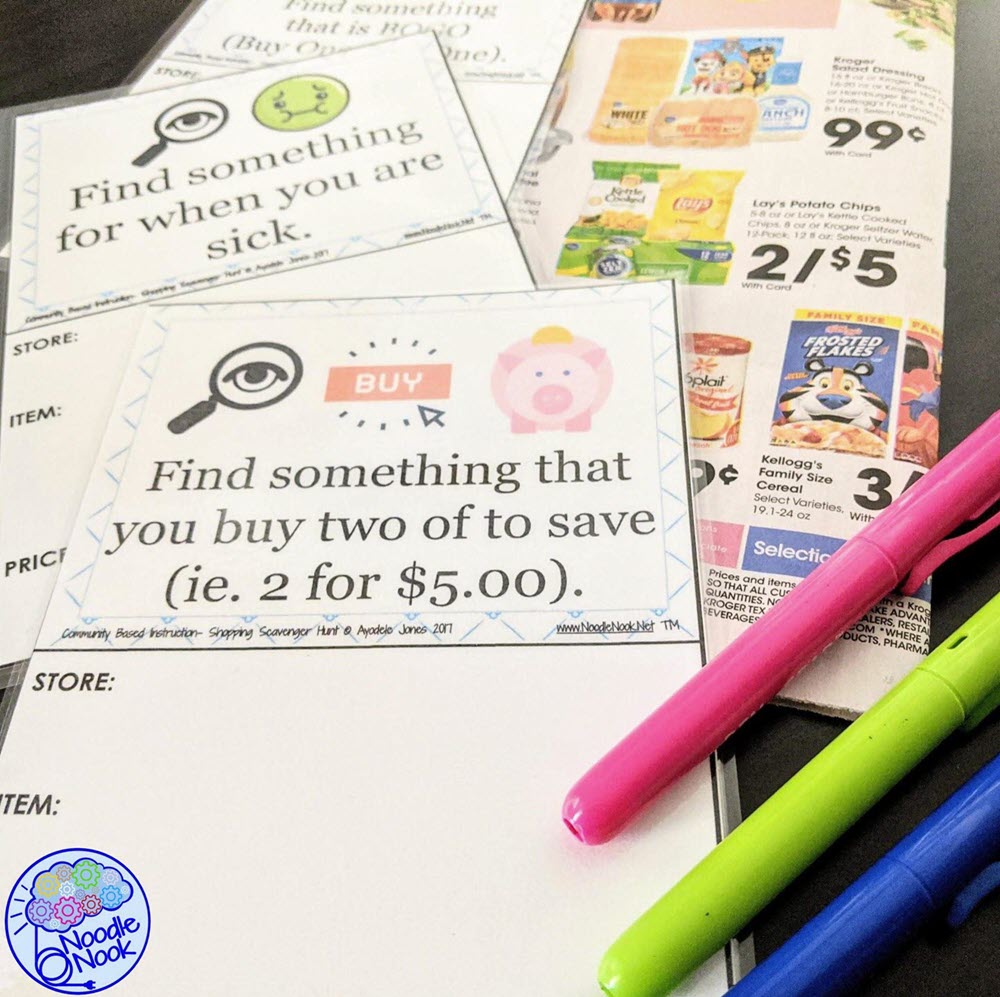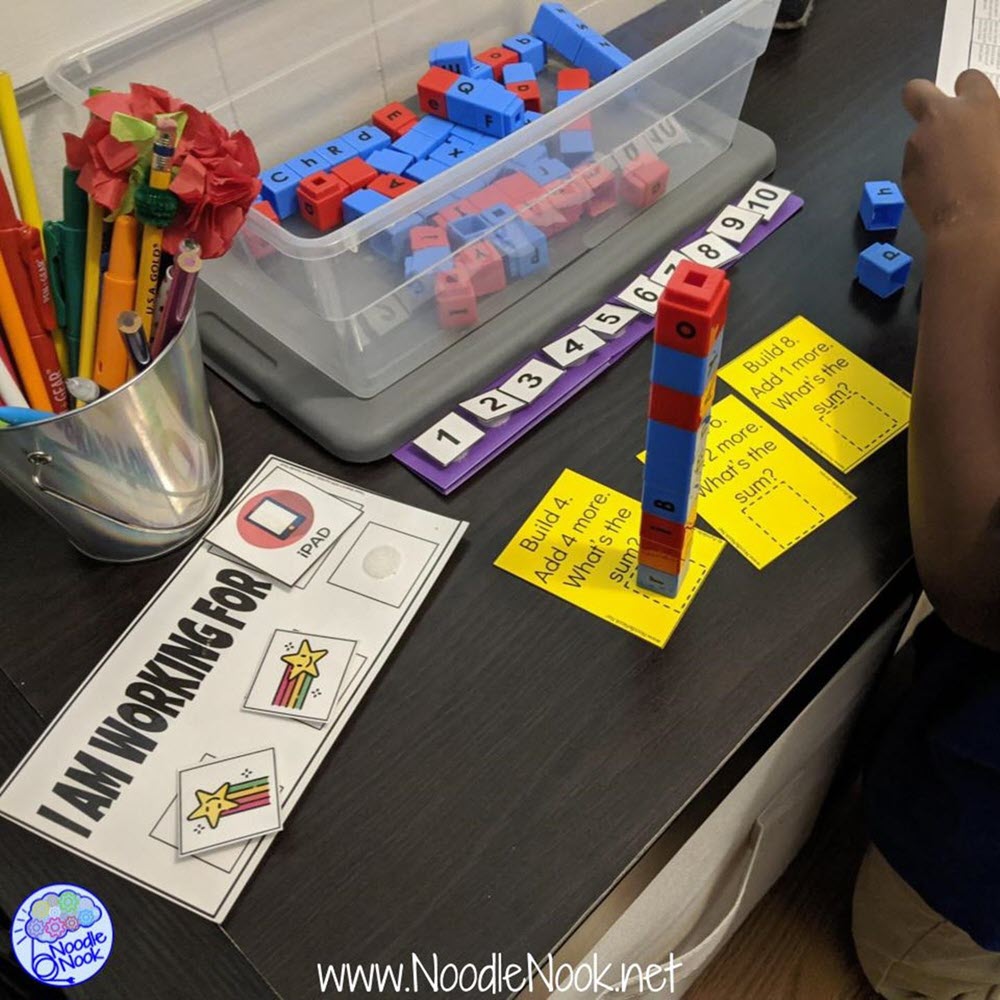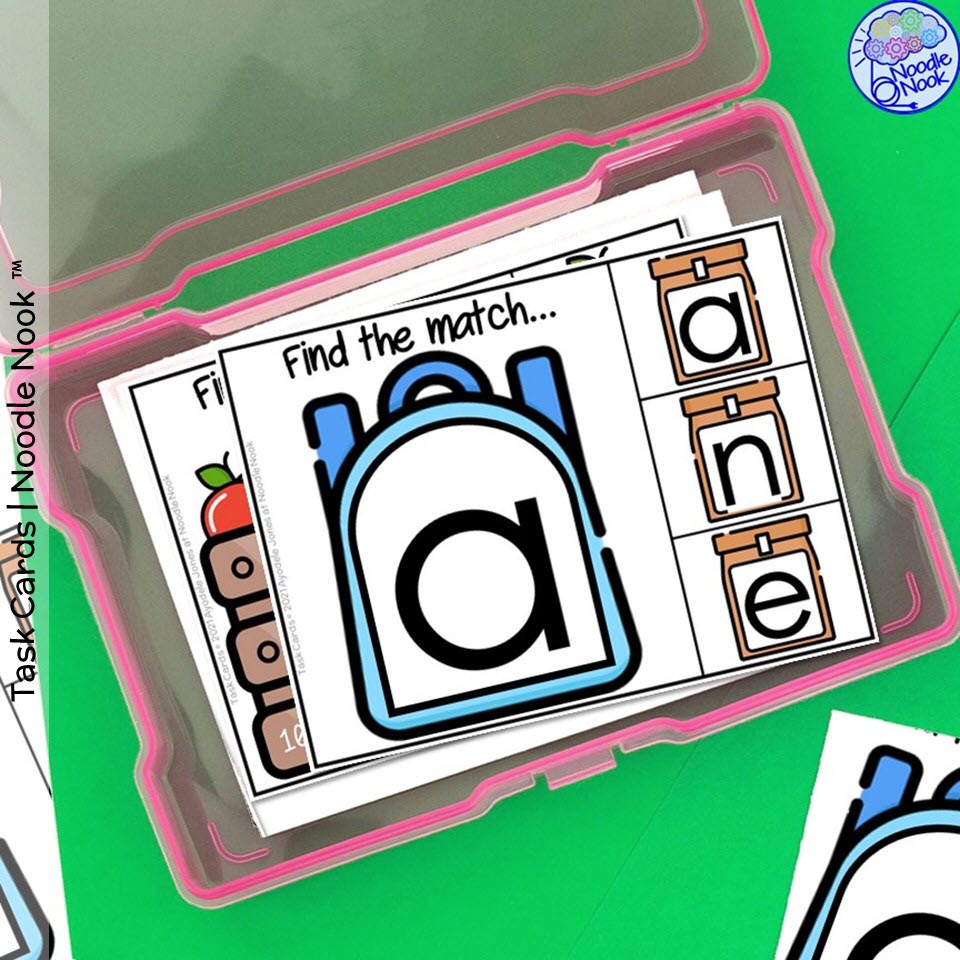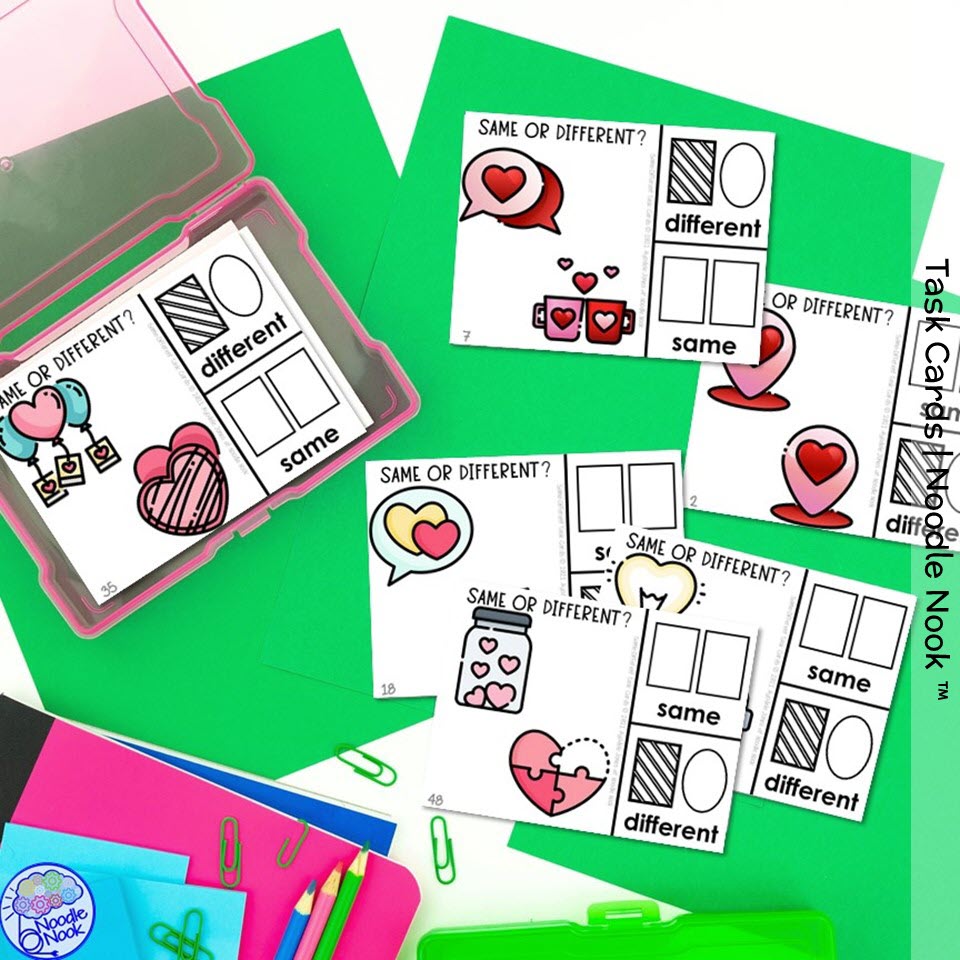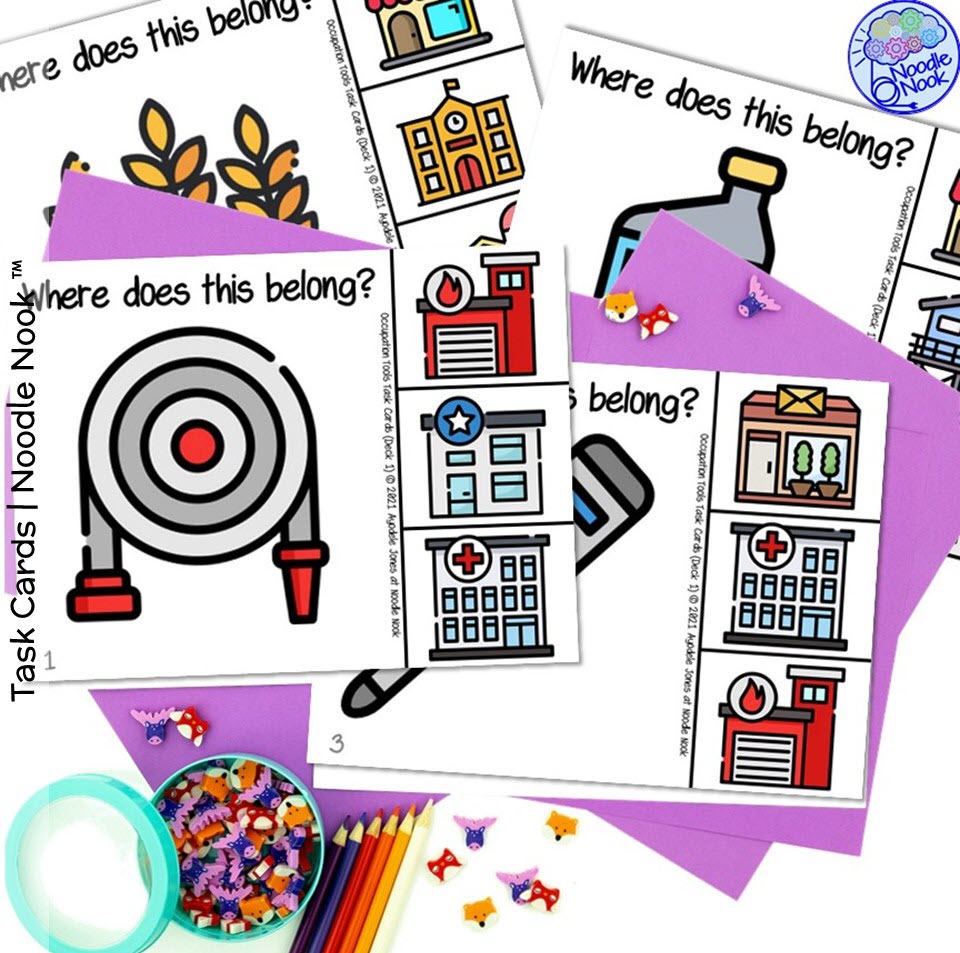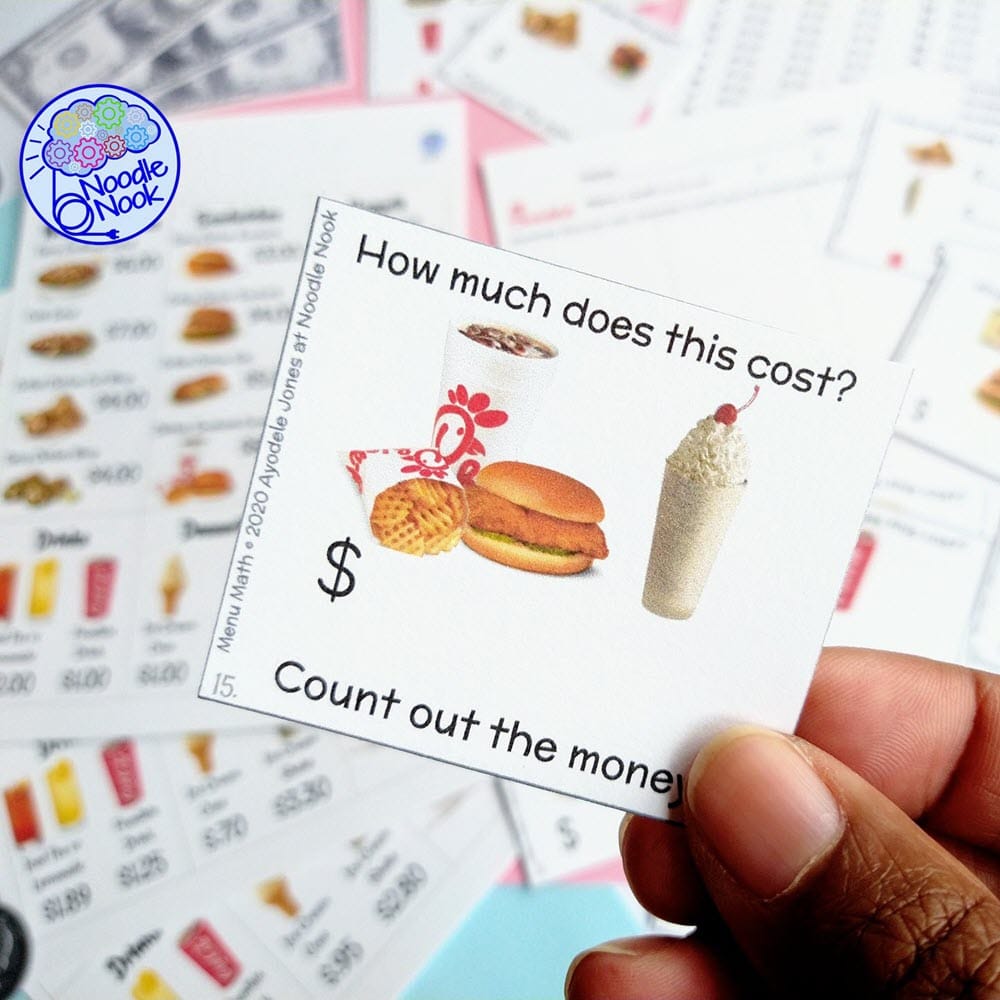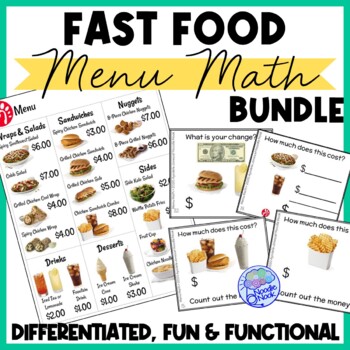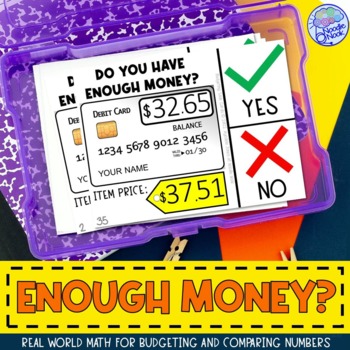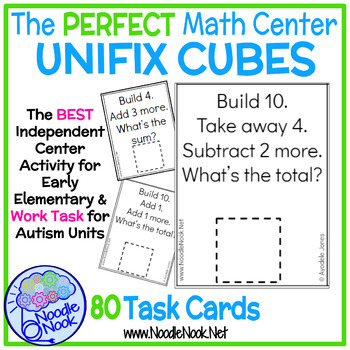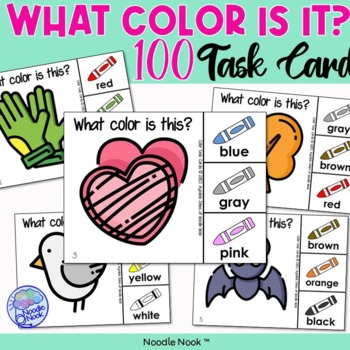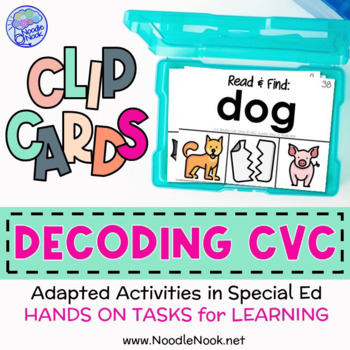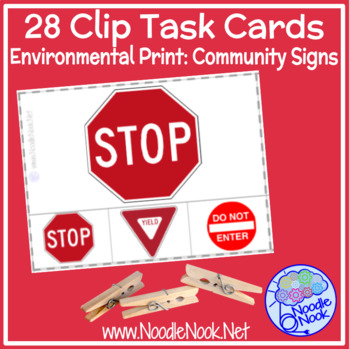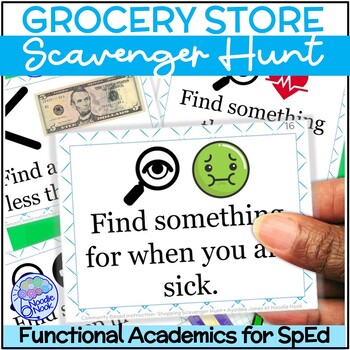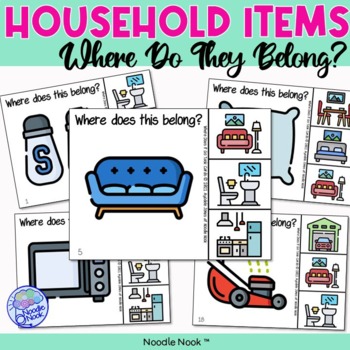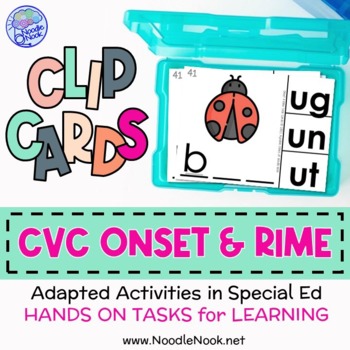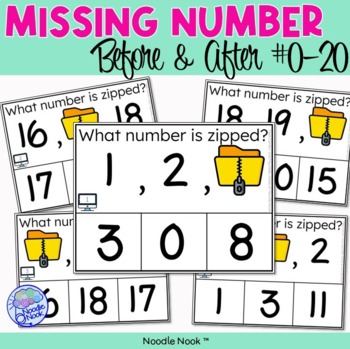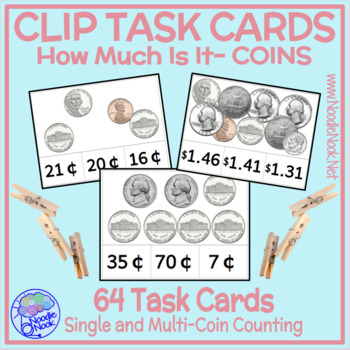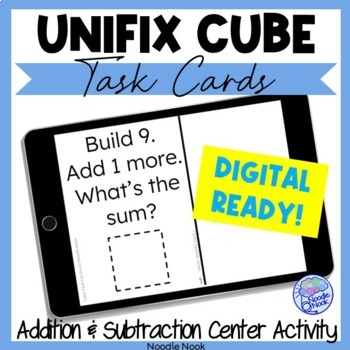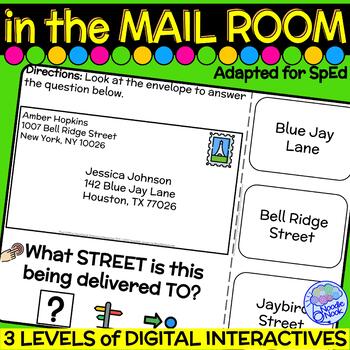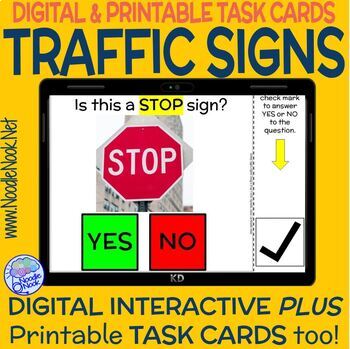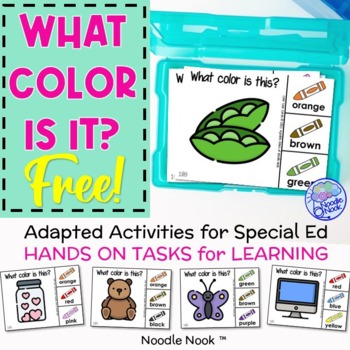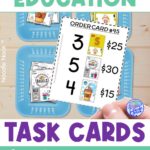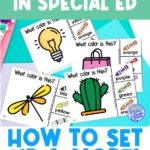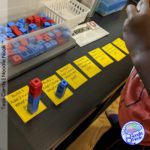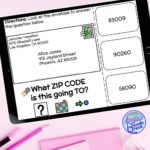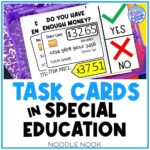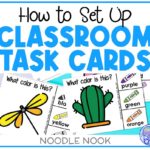Task Cards for Special Education
Wondering about task cards for special education and why they’re amazing? The answer is simple. Teaching in a special education classroom means balancing a lot of different student levels and needs. You can’t do that without some predictable tasks that keep your students learning and occupied, but aren’t consumable.
That’s why task cards for special education students are the ultimate teaching tool!
What Is a Task Card?
Task cards are a set of cards with questions or directions on them. Those questions can be answered with multiple choice options presented on the card or in long form on a separate piece of paper. They can be used to assess students, reinforce learning targets, or serve as an alternative to worksheets.
Task cards can be skills based, targeting a specific standard, process, or concept. They can come as write on, clip cards (where you use a paperclip or clothes pin to mark your answer), or with an accompanying student answer sheet. You can also have students write their answers in notebooks.
Task cards are usually come 4 or 6 to a printed page, making them just a bit smaller than a printed photo. Since they are reusable, most teachers will print them on heavier cardstock or laminate them for durability.
What Are Task Cards Special Education?
In special education, task cards focus in on functional skills, like money management, safety signs, reading comprehension, and social skills. Task cards in special education are great for data collection and to practice individual IEP goals.
Task cards in special education can target skills the same standards that are part of the general education. The difference here is those same questions on a task card often removes the clutter and adds visual supports. This format benefits students with disabilities.
Adapted task cards can offer a simplified format for students with disabilities so they can demonstrate the target skills despite any limits in reading, writing, organization or attention. Plus, adapted task cards can use pictures to relay information. They can use icons as answer responses.
Best of all, they can be reusable and save you a gazillion trips to the copier!
Why Use Task Cards?
Using task cards is more engaging for students than worksheets. You benefit from using fewer consumable resources since most task cards are reusable.
Adding a variety of task cards to the classroom as centers or stations lets you target multiple skills at once. Best of all, once you set your expectations for using task cards as well as some basic procedures, you can substitute the cards as needed and still run a well organized classroom.
How to Set Up Task Cards in the Classroom
Since students with disabilities benefit from predictable routines, using a task card system is ideal. It allows you to set up clear expectations while still changing up the content.
To set up task cards in the classroom, decide if you will use them as part of:
- Independent workstations
- 1:1 instruction and assessments
- Small group stations
- Classroom centers
All of these formats are perfect for task cards! I use them all, but you don’t have to. Here’s more details on each.
Task Cards for Independent Workstations
Independent workstations are the perfect place to use task cards. Use a left to right format to set up the area. Place cards that need to be done on the left and completed cards on the right.
With clip cards, which are more inclusive of students who aren’t great writers, you’ll put the clips in the center workspace. With write-on cards, students need a dry erase marker and eraser.
Model and review with the student how to move items from left to right and what to do when they’re finished. Start with just a few cards in the “to-do” basket or pile, that way you can practice. As students get comfortable with the system and build work stamina, add cards to their “to-do”.
Task Cards for 1:1 Instruction
One thing I know for sure, you’ll love using task cards for 1:1 instruction and data collection. Why? Because they’re reusable, organized by skill or topic, easy to assign to a paraeducator or teaching aide, and prep is super easy!
Set up your 1:1 instruction station with any needed behavior tools or visuals. (Read more about token boards here or visual schedules here.) Take note of the specific skills you need to assess or measure, based on the students IEP goals or individual needs. Grab the right data sheets, a pen or pencil, and the task cards.
You can use the task cards to model a skill as part of individualized instruction, do guided practice as you build confidence and stamina, or just as an opportunity to assess.
Task Cards for Small Group Stations
To use task cards for small group stations, you have a couple options. Small groups may be student only, as in you don’t have any support staff to monitor students. In that case, set up some clear procedures for students.
One option for student-led stations is to place all the cards are in the center. Then, have students grab one at a time to solve and record their answer on their individual paper. You may also partner students to work together on each card. That will depend on your students, their skill level, and their ability to work with others.
Another option for student-led stations is to have students work as a small group collectively with one card at a time. One student would pull a card, read it to the group, and then lead them to solve it together. They would record the group’s answer and then pass the “leader” responsibility to the next student to pull, read, and lead.
If you have support staff, they can use the task cards with a small group station in a guided practice format. You can use the same ideas from above, except the adult would be there to scaffold, model, and give immediate feedback.
Task Cards for Classroom Centers
If you’re looking for hands on learning and some opportunities to get student moving, consider using task cards as classroom centers. You can set these centers up throughout your room. Instruct students to bring their answer sheet to the center, pull a card and solve it as best they can, then record their answer on their sheet. Have a clearly defined procedure for if they get stuck, like asking a friend, getting the teacher’s help, or skipping that card. After 5-8 minutes, have students rotate to another center and repeat the process.
Alternatively, you can post several cards all over the room and have student find the card, answer the question on an answer sheet, and continue until they’re finished or time runs out. This task card scavenger hunt model is a little different than centers, but still gets kids moving and learning at the same time.
What Do You Put on Task Cards?
There are lots of ways to use task cards, as mentioned above. The next question is what do you put on task cards? You can use task cards for nearly any content. Since there are options for how a student responds, you can use task cards to demonstrate a skill, respond to a question, or process information.
You need to know what skill you’re targeting in order to decide on the best format. Bottom line: anything you can put on a worksheet, you can put on a task card… but the task card format is easier for students to process, limits clutter, and offers easy ways to level skills for students.
Task Cards for Math
My most favorite task cards in the history of task cards are the ones from this fast-food resource. It comes with leveled menus that are pretty recognizable. The task cards are all the same, the differentiation comes with the menu amounts (whole number, to the 5’s and to the penny). Student then get to “shop” and answer the task cards.
Students love these task cards and I love targeting money IEP goals with real world math problems. Seriously, this is the one task card set my students are always willing to do!
You can see more about this resource here.
Task cards for math focus on core skills and processes. In special education, that centers on time, money, and computation. Here are some fantastic task cards for math:
Task Cards for Reading Comprehension
Using task cards for reading comprehension and phonics makes instruction and interventions so much easier! These are task cards you’ll use over and over again because targeting these skills seems never-ending.
I love ones that target core skills, decoding, and blending since that’s where most of my students fall. Check out these task cards for targeting those skills:
Task Cards for Special Education
When you talk about task cards for special education, they are usually focused on more functional skills. Those are skills that fall just a bit outside standard academics, but are essential for students to be successful in the post post-secondary. Here are a few very helpful sets of task cards for special education students.
Task Cards for Autism
Students with autism tend to flourish with task cards because of the predictability and routine that is associated with the process. That means it’s easy to substitute in the task cards you want to work on without upsetting the student’s entire routine. I love task cards for autism classrooms as centers and independent workstations or work systems. Love!
These task cards may work perfectly in your autism classroom or for students with work systems.
Digital Task Cards for Special Ed
In this day and age (whoa, I sounded old as can be saying that)… anyway, in this digital age, tech tools are an essential in the classroom, especially for students with disabilities. They need all the practice with tech tools they can get. They’ll be the ones using tech in new and novel ways down the road, so we should include tech in our instruction today.
Digital task cards are easy to assign, interactive, and still have all the benefits mentioned above. Check out these digital task cards for your students:
FREE Task Cards
Still not sure where to start with task cards in your classroom? No worries. Start here!
Download these free task cards and add them to your classroom centers or workstations. See if they fit with the flow of your class and jive with your students. My guess is you’ll fall in love with them and want more. So, start here…

